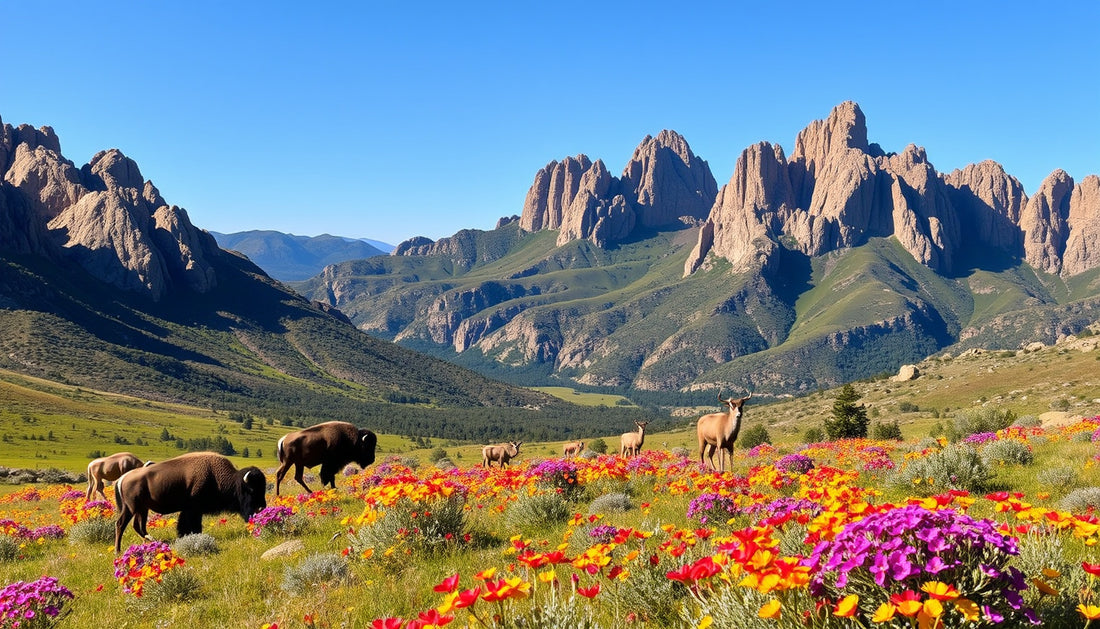
Explore the Wonders of the Wichita Mountains: Your Ultimate Visitor Guide to Adventure and Natural Beauty
Share

Nestled in southwestern Oklahoma, the Wichita Mountains offer a breathtaking blend of rugged terrain, vibrant ecosystems, and rich history. Whether you’re an avid hiker, wildlife enthusiast, or someone seeking peace in nature’s embrace, the Wichita Mountains Wildlife Refuge presents a treasure trove of unforgettable experiences. But what makes this landscape so unique, and how can you make the most out of your visit? Let’s dive into the wonders of the Wichita Mountains and uncover the perfect guide to your next adventure.
Why Visit the Wichita Mountains?
The Wichita Mountains stand as one of the oldest mountain ranges in North America, with formations dating back over 500 million years. Unlike towering alpine ranges, these hills and granite peaks rise dramatically from the surrounding plains, creating a striking contrast and diverse habitats.
Key Highlights:
- Diverse Wildlife: Home to bison, Texas longhorn cattle, elk, deer, and prairie dogs.
- Flora Diversity: More than 800 plant species, including native grasses, wildflowers, and cacti.
- Outdoor Activities: Hiking, rock climbing, birdwatching, and fishing.
- Historic Sites: Ancient Native American artifacts and Civilian Conservation Corps structures.
Dr. Lisa Williamson, a renowned ecologist, notes, “The Wichita Mountains provide a living laboratory where you can witness the dynamic interactions between geology and biology—showcasing resilience and adaptation that’s inspiring for nature lovers and scientists alike.”
Planning Your Visit: What to Expect
When preparing for your trip, it’s essential to know the best times and the facilities available to enrich your experience.
Best Times to Visit
- Spring (March-May): Blooming wildflowers and active wildlife.
- Fall (September-November): Mild temperatures and spectacular autumn foliage.
- Summer: Hot and dry; great for early morning activities.
- Winter: Cooler temperatures and less crowded trails.
Visitor Facilities
- Visitor Center: Provides maps, educational exhibits, and expert guidance.
- Campgrounds and Picnic Areas: Equipped for day-use and overnight stays.
- Trail System: Over 15 designated trails ranging from easy strolls to challenging climbs.
Did you know? The Refuge manages over 59,000 acres, offering ample space for solitude and exploration.
Must-Do Activities in the Wichita Mountains
Hiking and Rock Climbing
The Refuge boasts trails leading to iconic peaks such as Mount Scott and Mt. Pinchot. Are you ready to conquer a summit with panoramic views of the plains?
- Mount Scott Trail: 2.5 miles round trip, moderate difficulty.
- Elk Mountain Trail: A quieter path perfect for spotting wildlife.
- Comanche Trail: Connects various features, offering longer trekking options.
Rock climbers find the granite fields particularly enticing. According to local climbing expert Mark Hernandez, “The unique granite formations here provide solid holds and less crowded routes, appealing to climbers of all skill levels.”
Wildlife Watching and Birding
The plains and rocky outcrops support a thriving population of native species.
- Bison Herd: One of the oldest wildlife conservation efforts in the U.S.
- Over 240 bird species identified, including bald eagles and golden eagles.
- Chance encounters with coyotes, bobcats, and river otters.
Fishing and Picnicking
- Lake Lawtonka: Offers stocked fishing opportunities amid scenic surroundings.
- Family-friendly picnic spots are abundant, allowing you to relax under sprawling oak trees.
Environment and Conservation Efforts
The Wichita Mountains Wildlife Refuge is not just a playground for outdoor enthusiasts but also a critical conservation area. Established in 1901, it protects endangered species and preserves native prairie ecosystems.
Key conservation measures include:
- Wildlife Management: Careful monitoring of animal populations.
- Habitat Restoration: Efforts to remove invasive species and promote native flora.
- Public Education: Programs encouraging sustainable interaction with nature.
As conservation biologist Dr. Anthony Greene emphasizes, “Protecting these landscapes ensures that future generations can experience the interconnected beauty of geology, flora, and fauna that makes the Wichita Mountains so special.”
Ready to Explore?
Are you inspired to experience the rugged beauty, diverse wildlife, and historical richness of the Wichita Mountains? Whether it’s a day hike, a weekend camping trip, or simply a scenic drive through natural splendor, the Wichita Mountains Wildlife Refuge offers a remarkable journey into America's heartland.
Quick Visitor Tips:
- Bring plenty of water and sun protection—Oklahoma sun can be intense.
- Follow Leave No Trace principles to help preserve the environment.
- Check the Refuge website for alerts on trail conditions and wildlife activity.
- Consider guided tours for deeper insights and safety.
Your adventure awaits—step into the Wichita Mountains and witness nature’s grandeur firsthand. Pack your gear, bring your curiosity, and let the journey begin!
Call to Action:
Support the conservation of this beautiful refuge by volunteering, donating, or simply spreading the word. Visit the official Wichita Mountains Wildlife Refuge website to learn more about upcoming events and how you can contribute to preserving this natural gem. Are you ready to explore and protect the wonders of the Wichita Mountains?






